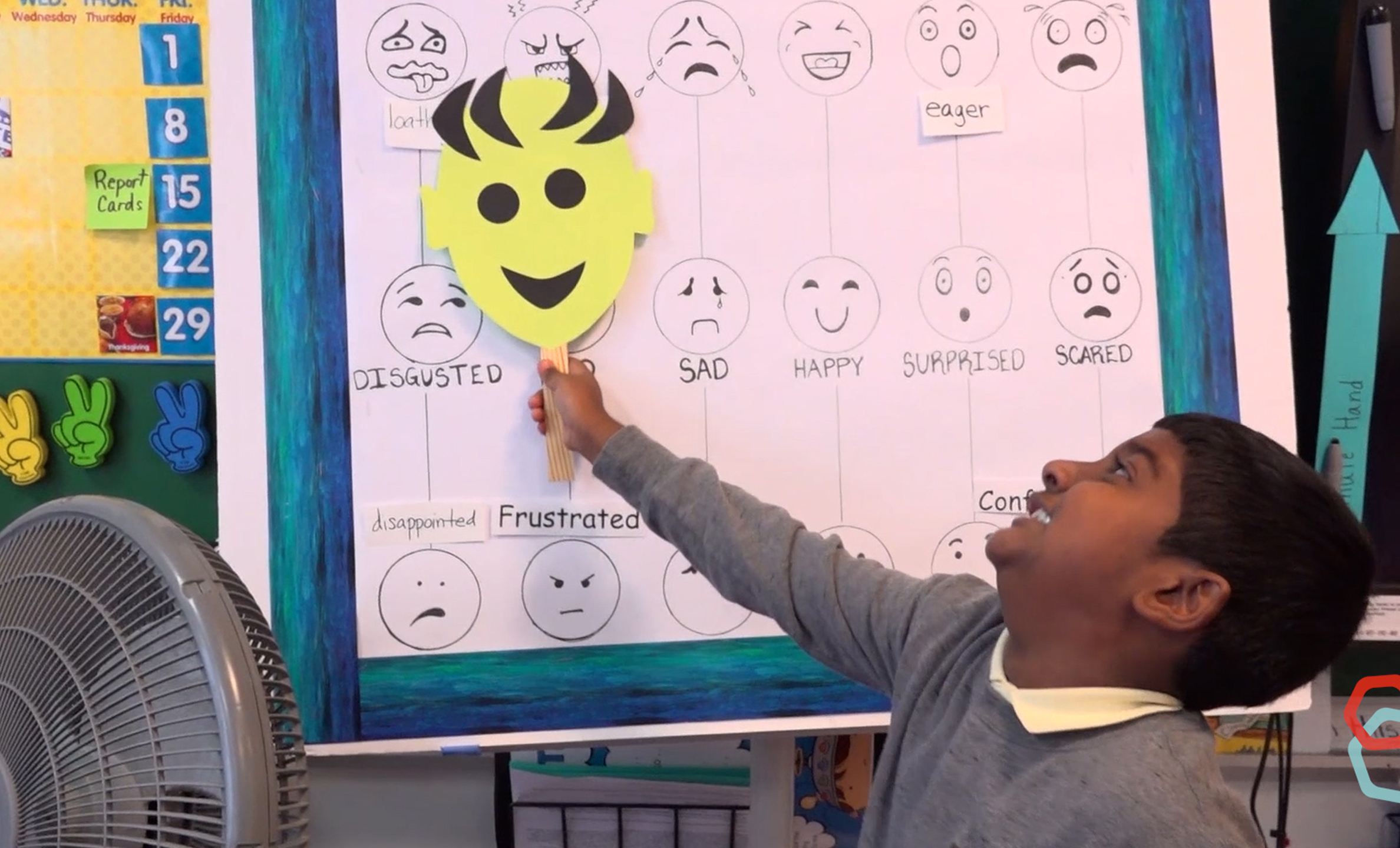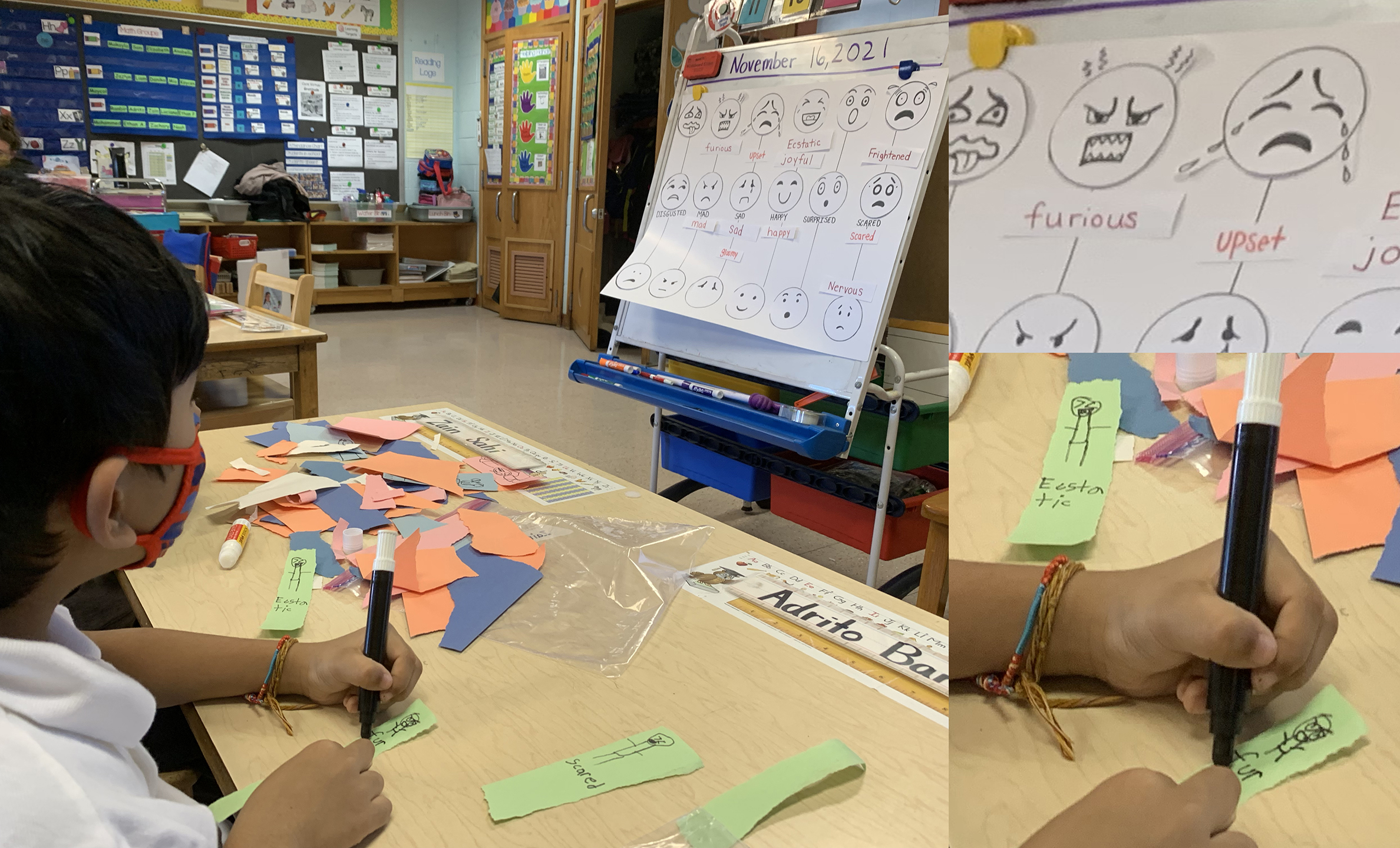


In language and literacy-
Learners will be able to express and describe emotions verbally. Learners will be able to compare and contrast emotions using synonyms. Learners will be able to contextualize a range of emotions with specificity of vocabulary.
In art-making-
Learners will be able to demonstrate emotion physically through gestures,movement and vocal expression.
See Next Generation Standards here
Danielson Domains-
2a, 2b,
3a,3b,3c,3d,3e
Sometimes your students will be able to easily and confidently place the advanced emotion words on the map based on their experience embodying the vocabulary in the emotion statue game. Other times, they may still need additional support. Here are some tricks to keep in your back pocket and use as needed.
Be sure to always introduce an extreme and subtle synonyms together and take time to have fun shifting between them with your bodies and voices.
Keep the Emotion Mapping Tool up in your class. Continue to introduce more advanced emotion vocabulary using the statue game and mapping. Check out the class examples on this page for ideas about how to connect this activity to other arts and literacy lessons.